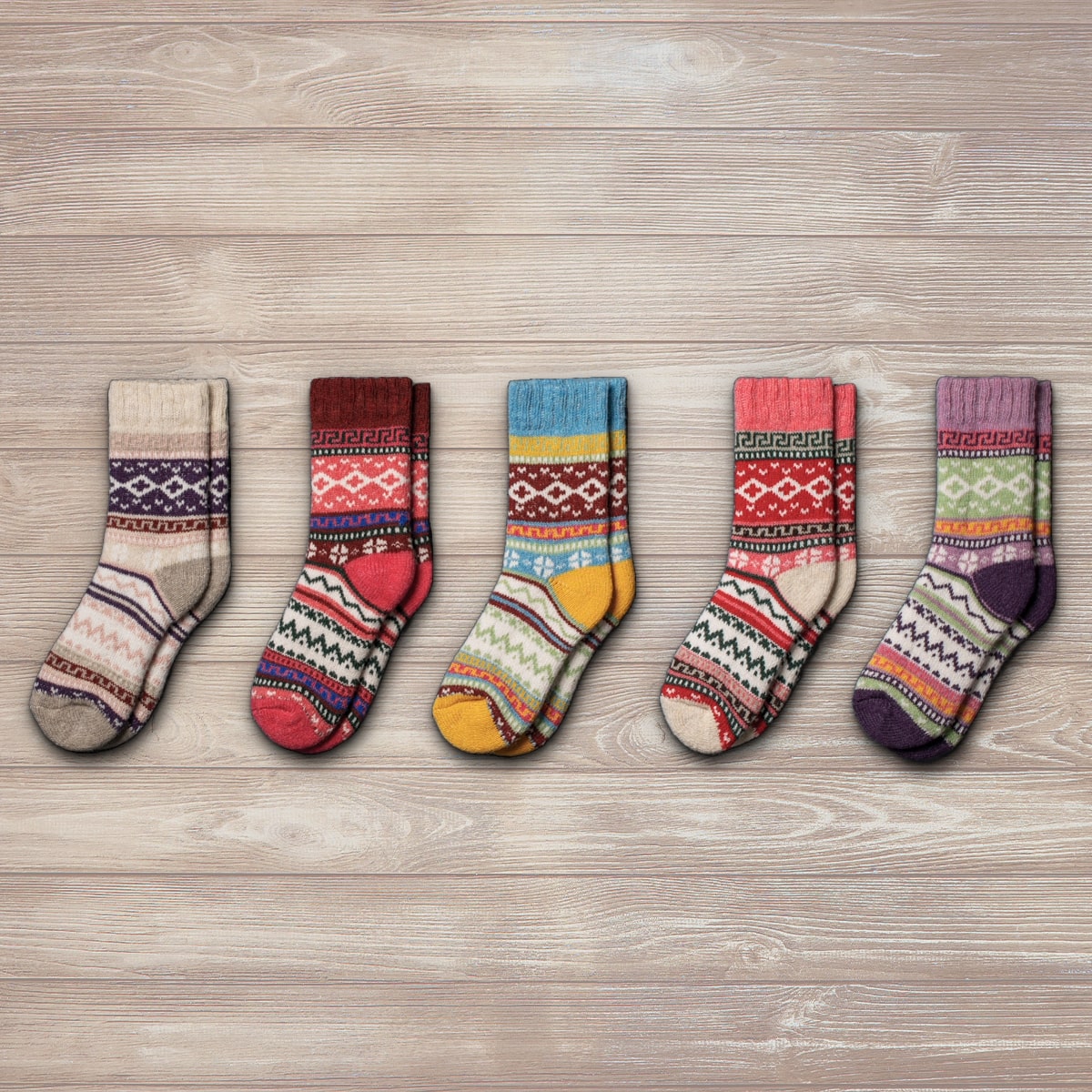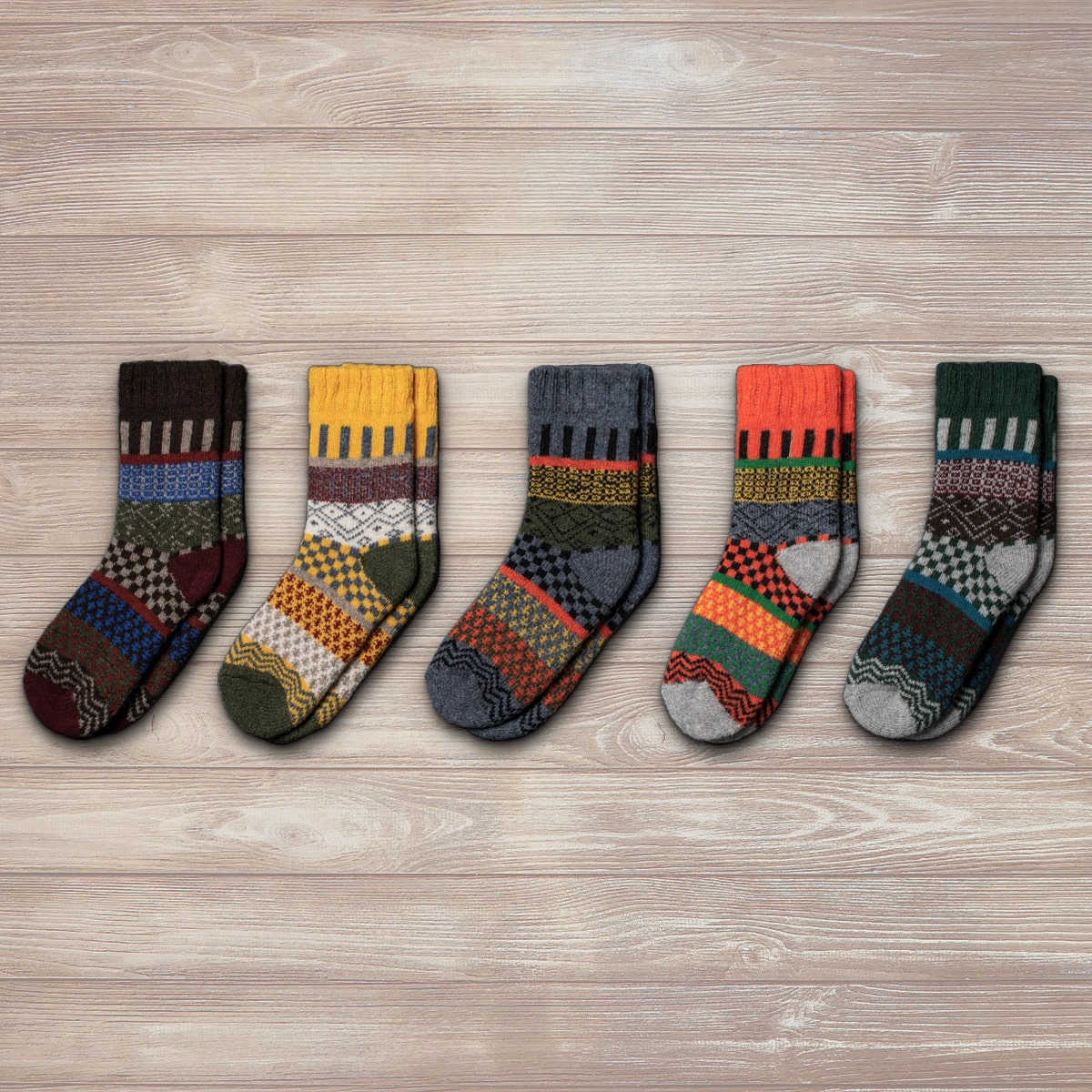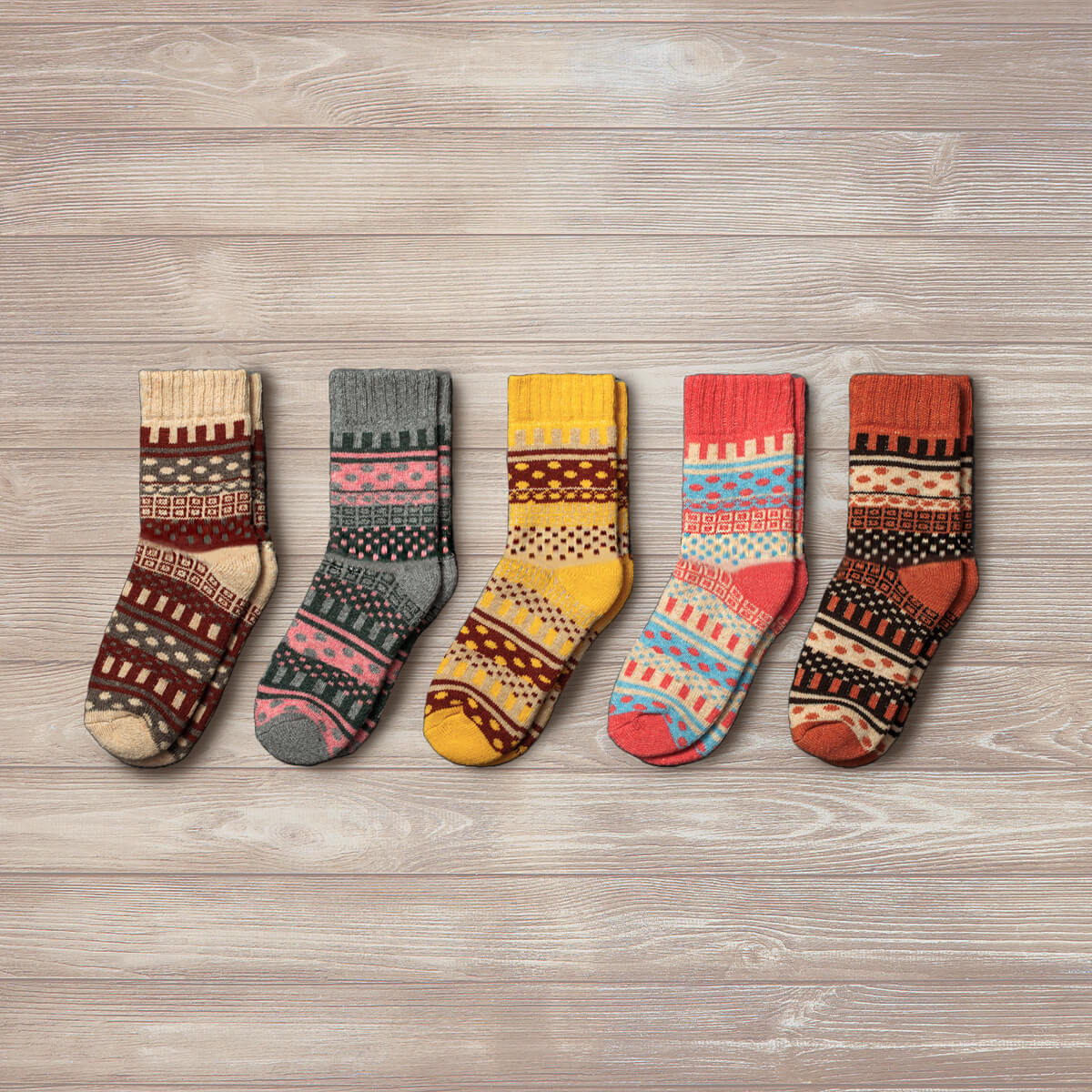Your Cart is Empty

How to Care for Cotton Socks
7 min read
This guide will help you understand how to care for cotton socks for women and cotton socks for men. These essential pieces of clothing are often taken for granted. Still, to benefit fully from them, upkeep is necessary. There are particular methods to wash, clean, and store such socks. Not to mention, being mindful of the season and the activities you use them for will make a difference. Besides knowing what to do, we also focused on what not to do. That's right, we put together the most frequent mistakes in sock maintenance.
Why Cotton Socks Deserve Better Care
You might wonder: why the fuss? Cotton is the world's most popular material and every wardrobe in the world has its pairs of thin or thick cotton socks. Proper care will ensure that these pairs stay with you for a long time.
However, longevity is not the only reason you need to be mindful of your socks' maintenance. Hygiene is equally important. Here is a cool fact: our feet have 250.000 sweat glands. This unfortunately means that there are many sweat-related health issues, like:
- Athlete's foot
- Irritation
- The worsening of conditions like bunions
- Bad odor
- Microbial infection

Thorough foot hygiene is crucial in preventing these diseases. That includes washing your socks after each wear, but even that process takes some time to master. Some of your laundry habits are not as friendly to cotton socks as you would have thought.
This material has some definite no-nos. If you avoid those, you can keep your trusty pairs for long periods, and your feet will also thank you for this.
Going for high-quality cotton and material blends is another source of joy for your feet. For instance, Nordic Socks' Classic Collection emphasizes the moisture-wicking of cotton fiber and the durability of other fabrics. The focus on improving circulation and cushioning high-impact areas will also be a favorite characteristic for active people.
Still, getting these benefits from your footwear is only possible if you maintain them with appropriate washing and drying.
Washing Cotton Socks the Right Way
Washing socks is an art - or at least, as intricate as one. You have many decisions to take after opting for hand washing or using a cycle on the machine.

What’s the Best Way to Wash Cotton Socks?
The key to maintaining your cotton socks is being gentle with them. There are multiple ways to do this, by hand or by machine.
Regardless of your preferred method, keep in mind that the water's temperature should not exceed 30 degrees Celsius or 80 degrees Fahrenheit. The primary reason for that is that colder water prevents shrinkage. Furthermore, washing your socks in a hot cycle will lead to color bleeding and an overall loss of cotton's quality.
Cooler is better if you want to avoid a wispy, harsh touch coming from your socks.
Although cool cycles also tend to have fewer rotations, you may want to set that manually. Remember: although 1200-rotation cycles are quicker, they come with more difficulties in the long term.
Not to mention that slow and cool settings on the washing machine are more environmentally friendly. Thus, you can reduce carbon emissions and also keep your cotton socks for a long time.
Another aspect to consider is frequency. Although socks must be washed after each wear - non-negotiable - you need not go for a double cycle. If you do not overload the machine and use adequate temperatures and rotations, your socks will not require extra cleanliness.
Should I Turn My Socks Inside Out Before Washing?
A less well-known tip is to turn your socks inside out when you toss them in the machine. The primary reason for that is the increased access to lint and dead skin residue. We know this is not the most appetizing description, but shedding is a natural occurrence. Plus, lint is unavoidable when you use the washing machine, and this is an effective way to limit it and increase your long-term comfort.
Understanding Washing Machine Settings for Cotton Socks
The general guideline is to pick slower, gentler cycles on the machine. The 15-minute one might seem tempting, especially after a long day of work, but it comes with multiple disadvantages:
- It might not help you deep-clean your socks and other garments
- It may also be too rough on the fabrics, decreasing their quality over time
- It is not friendly to the environment
That being said, what slow cycle should you choose: normal or dedicated to delicate clothing? We favor the latter, as it tumbles your garments significantly less, thus decreasing the risk of shrinkage and loss of fluffiness.
Detergent and Washing Agents

Best Detergents for Cotton Socks
Detergents are a pain to buy. We know they often feel like the dreaded purchase of the month due to their prices, so opting for the best price-to-quality ratio will at least make it worthwhile.
Cotton is friendly to multiple detergent types, but it certainly doesn't respond well to bleach. This corrosive agent can damage both the color and texture of cotton-based socks, not to mention weaken their elasticity over time.
Enzymes are a constant in most cleaners. Still, a high concentration of proteases might harm delicate clothing. While proteases are great at removing tough stains like grease, this intensive action can cause excessive wear on delicate fabrics like thin cotton socks.
Common Detergents That Cause Sock Quality to Decline
Besides chlorine bleach, it's also a good idea to avoid detergents with excess phosphates. Phosphates are used in some detergents but are increasingly restricted because they harm waterways (causing algal blooms). They might appear under different names, but "-oate" is a common suffix (like phosphate, carbonate).
If you're unsure about what's in your detergent, you can use mobile apps that scan product tags and flag harmful ingredients easily.
When it comes to pH levels, a neutral pH of 7 is ideal for laundry detergents. However, anything between 7 and 10 is generally safe for cotton fabrics, helping to clean effectively without causing damage.
Drying Cotton Socks Without Damage

Should You Air Dry or Tumble Dry Cotton Socks?
The greatest forewarning any sock enjoyer needs to hear: cotton shrinks if you dry it excessively! It can and it will—often right when you have a big and long day ahead. To prevent this, you need to be extra careful while drying your freshly washed pairs.
Generally, tumble drying is not recommended for delicate materials such as the high-quality cotton blend we use for our Nordic Socks. Even so, it is possible to use a drying machine occasionally—just make sure to set it on a low heat or delicate cycle, which is gentler on fine fabrics. The advantage is, of course, the quickness of the process compared to natural drying. Plus, the toasty feeling of tumble-dried socks is hard to match.
Still, air drying remains the ideal method. Choosing it ensures that you will enjoy your socks for a long time to come. The downside is the lack of convenience in a fast-paced world, and you must also be mindful of external factors like weather and direct sunlight, which can fade colors over time.
How to Prevent Elasticity Loss When Drying
Excess heat, whether natural or artificial (especially artificial), can greatly reduce the elasticity of your thick cotton socks. Tumble drying on high heat is particularly damaging, causing fibers to weaken, shrink, and lose their stretch over time.
However, the silent threat is often the sun itself. Prolonged exposure to strong, direct sunlight can dry out the cotton fibers, fade colors, and gradually make the material more brittle. Even though the sun feels natural and harmless, too much of it can be just as tough on your socks as a hot dryer. Air drying in the shade is the best method to preserve the fabric.
Why You Should Keep Cotton Socks Out of Direct Sunlight
The primary side effect of sunlight exposure is the gradual discoloration of your socks. At Nordic Socks, we believe that self-expression starts with vibrant colors and intricate Nordic designs—details that can lose their brilliance when exposed to strong sunlight over time.
Beyond fading, excessive heat and UV rays can weaken cotton fibers, leading to reduced elasticity and a noticeable loss of that soft, plush feeling you expect from premium socks.
To preserve both the look and feel of your Nordic Socks, we always recommend air drying them indoors or in a shaded area, where they can dry naturally without direct exposure to damaging UV rays.
Extending the Life of Your Cotton Socks

Sock Care Techniques for Long-Term Use
Now that we’ve covered cleaning and drying, there’s one more crucial step: storing. This step often gets overlooked, which is why your cotton socks might suffer over time.
Balling socks together is tempting for convenience, but it comes with risks. First, it can cause overstretching, weakening the fabric over time. Plus, balled-up socks tend to get lost in the wardrobe chaos, turning your drawer into a mini black hole.
Instead, we wholeheartedly encourage folding. Ideally, dedicate a specific drawer for your socks and hosiery, keeping them neatly organized. It's also smart to own several high-quality pairs and rotate them regularly, this reduces wear and tear from frequent washes and extends the lifespan of each pair.
While this may seem intuitive, it’s a step many skip because they tend to have a favorite (or lucky) pair. The solution? Stock up on multiples of the same style or choose subtly matching pairs from the same collection for easy rotation.
Mistakes That Reduce Sock Lifespan
The keyword when handling cotton socks is gentleness. The most common mistakes are wringing them out too harshly or overusing the tumble dryer. Hanging socks to dry in direct sunlight can also be the downfall of their softness and elasticity.
Using fabric softener may seem helpful, but it can actually cause unwanted side effects—it's best to stick to a single, mild detergent. Just as importantly, wash only one type of fabric at a time. Each material has its own care requirements, and mixing them often means none are properly met.
Frequently Asked Questions

Should you wear 100% cotton socks?
While 100% cotton socks are breathable and soft, they aren’t always the best choice for everyday wear. Pure cotton tends to absorb moisture without wicking it away, which can leave your feet feeling damp and uncomfortable. That's why cotton blends are often a smarter option, combining cotton with materials like polyester or elastane improves durability, elasticity, and moisture management.
Get Exclusive offers
Join our email list and get exclusive offers and 10% off on first order.
Recent Articles
-
 Are wool socks good for summer? July 29, 2025
Are wool socks good for summer? July 29, 2025 -
 The Cultural Inspiration Behind Our Sock Designs May 27, 2025
The Cultural Inspiration Behind Our Sock Designs May 27, 2025 -
 How to Care for Cotton Socks May 27, 2025
How to Care for Cotton Socks May 27, 2025 -
 Wool vs Cotton Socks for Hiking: Which is the Best Material for Hiking Socks? April 11, 2025
Wool vs Cotton Socks for Hiking: Which is the Best Material for Hiking Socks? April 11, 2025 -
 Foot Health: How Nordic Wool Socks Support Your Wellbeing February 18, 2025
Foot Health: How Nordic Wool Socks Support Your Wellbeing February 18, 2025
Enjoying this content?
Sign up to get notification about new articles, special offers and new products.
news & Updates
Get the newsletter to receive direct information about offers and new products.
Where are we shipping to?
Purchase from your country’s website.
It’s the fastest way to pamper your feet with comfy socks.





























































































